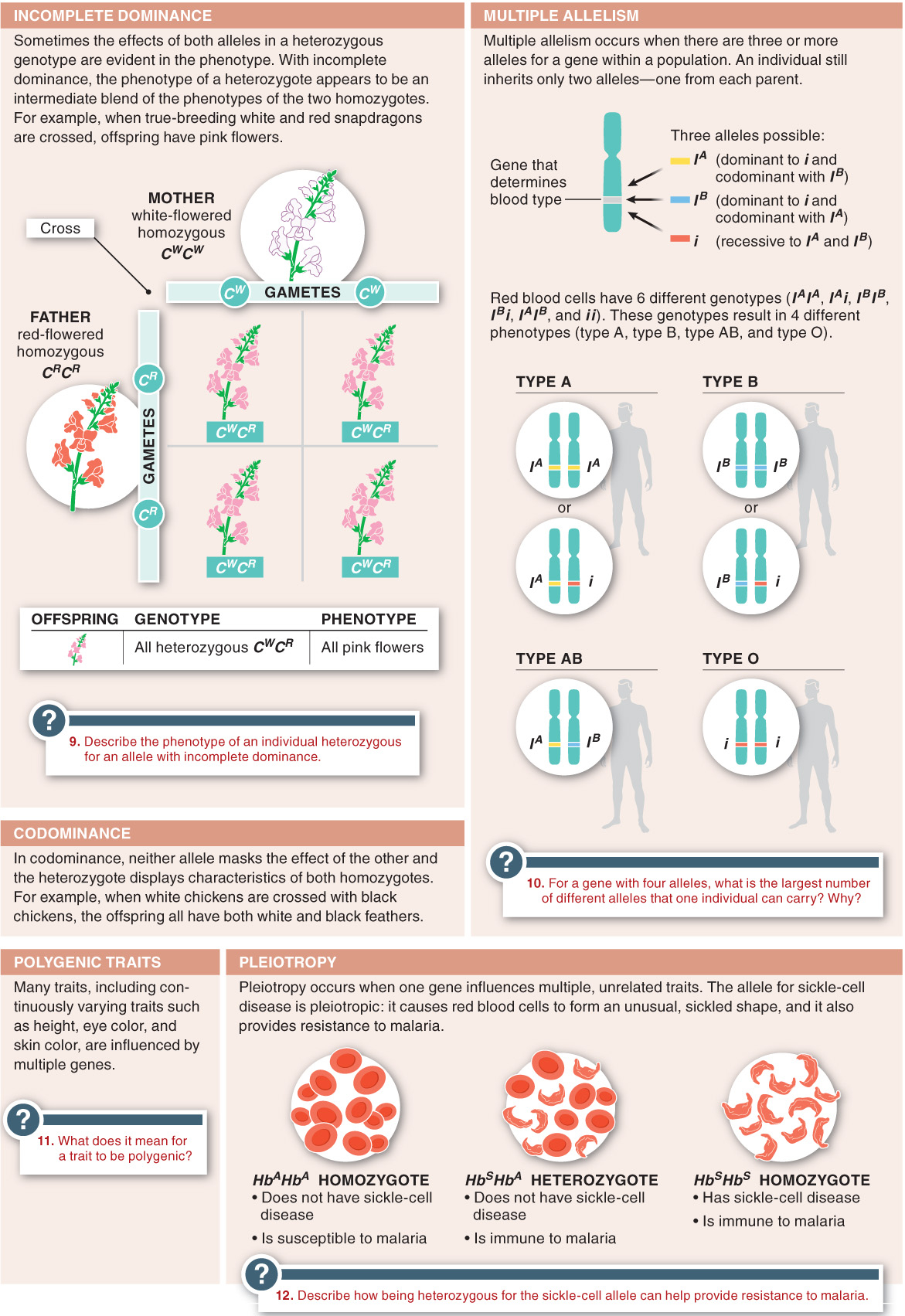The world in which each trait is coded for by a single gene with two alleles—


All of the offspring of a black hen and a white rooster are gray. The simplest explanation for this pattern of inheritance is:
- a) multiple alleles.
- b) codominance.
- c) incomplete dominance.
- d) incomplete heterozygosity.
- e) sex linkage.

A woman with type B blood and a man with type A blood could have children with which of the following phenotypes?
- a) AB only
- b) AB or O only
- c) A, B, or O only
- d) A or B only
- e) A, B, AB, or O

Which of the following traits shows a polygenic method of inheritance?
- a) flower color in snapdragons
- b) blood type in humans
- c) seed color in peas
- d) sickle-
cell disease in humans - e) skin color in humans

The impact of a single gene on more than one characteristic is called:
- a) incomplete dominance.
- b) environmentalism.
- c) balanced polymorphism.
- d) pleiotropy.
- e) codominance.

A rare, X-
- a) The son of a woman with this disease has just slightly more than a 50% chance of having this condition.
- b) All daughters of a man with this condition will have the condition.
- c) The daughter of a woman with this disease has just slightly more than a 50% chance of having this condition.
- d) Every son of a woman with this disorder will have this condition.
- e) The son of a man with this condition is no more likely to have the condition than the son of a man who doesn’t have the condition.

313